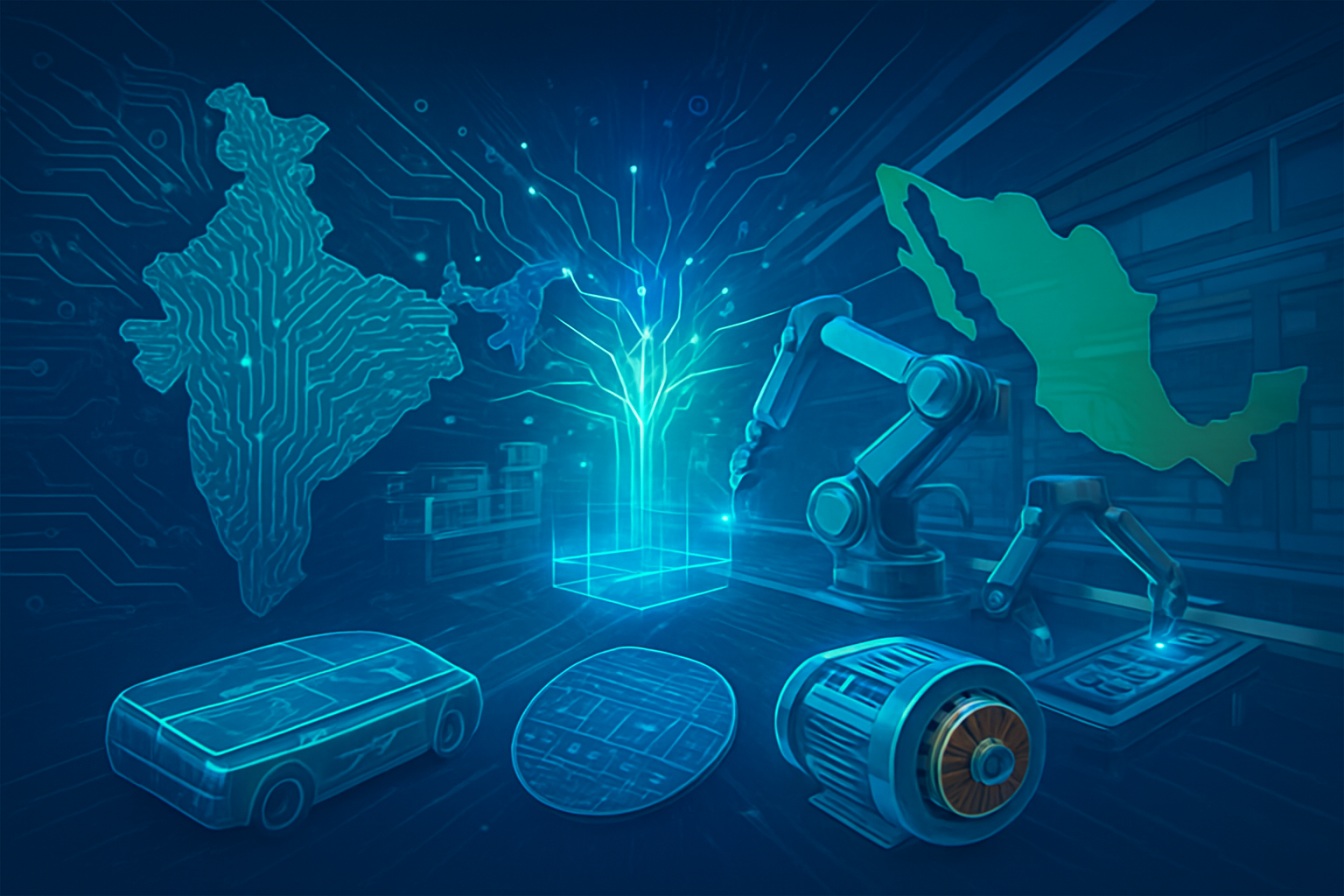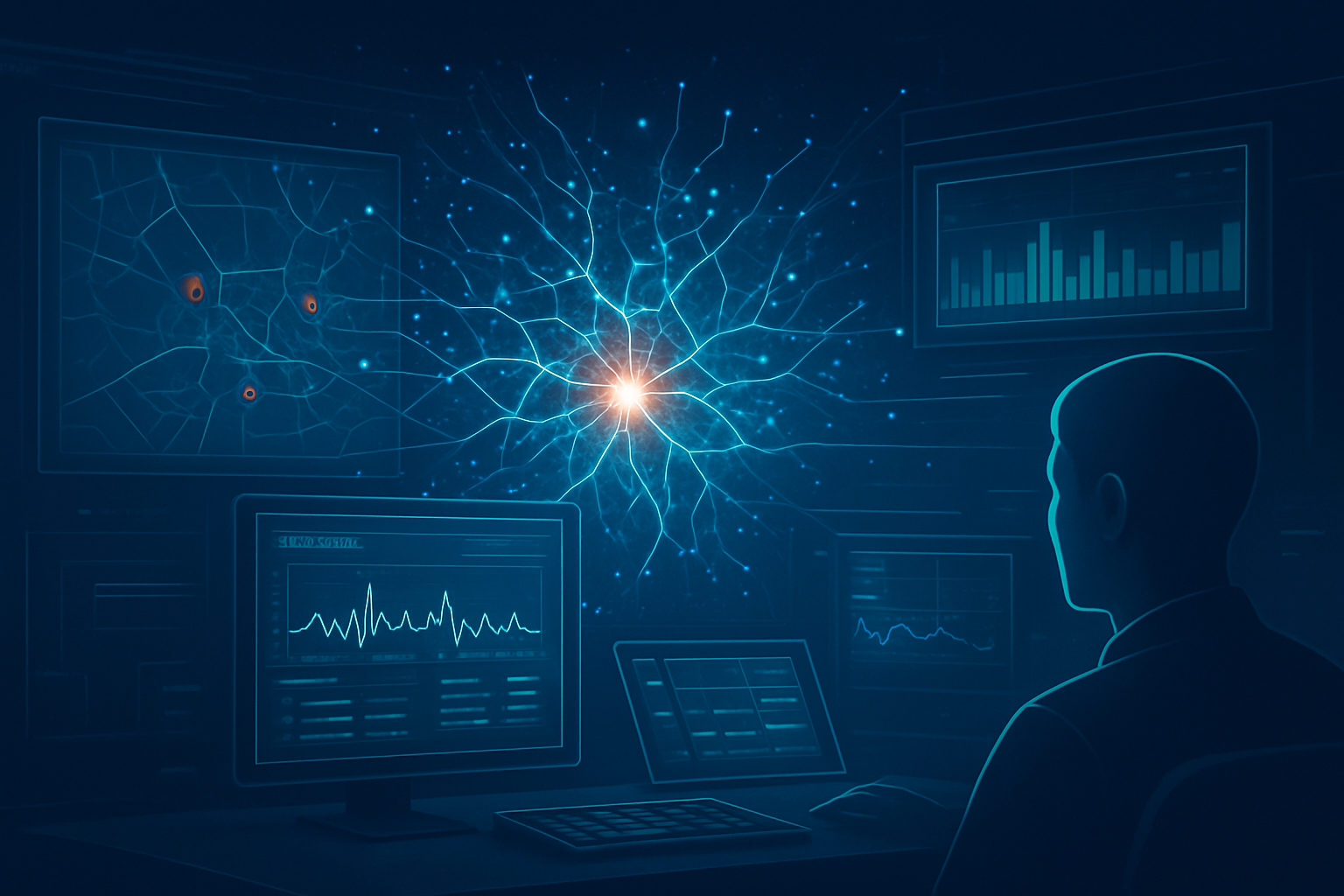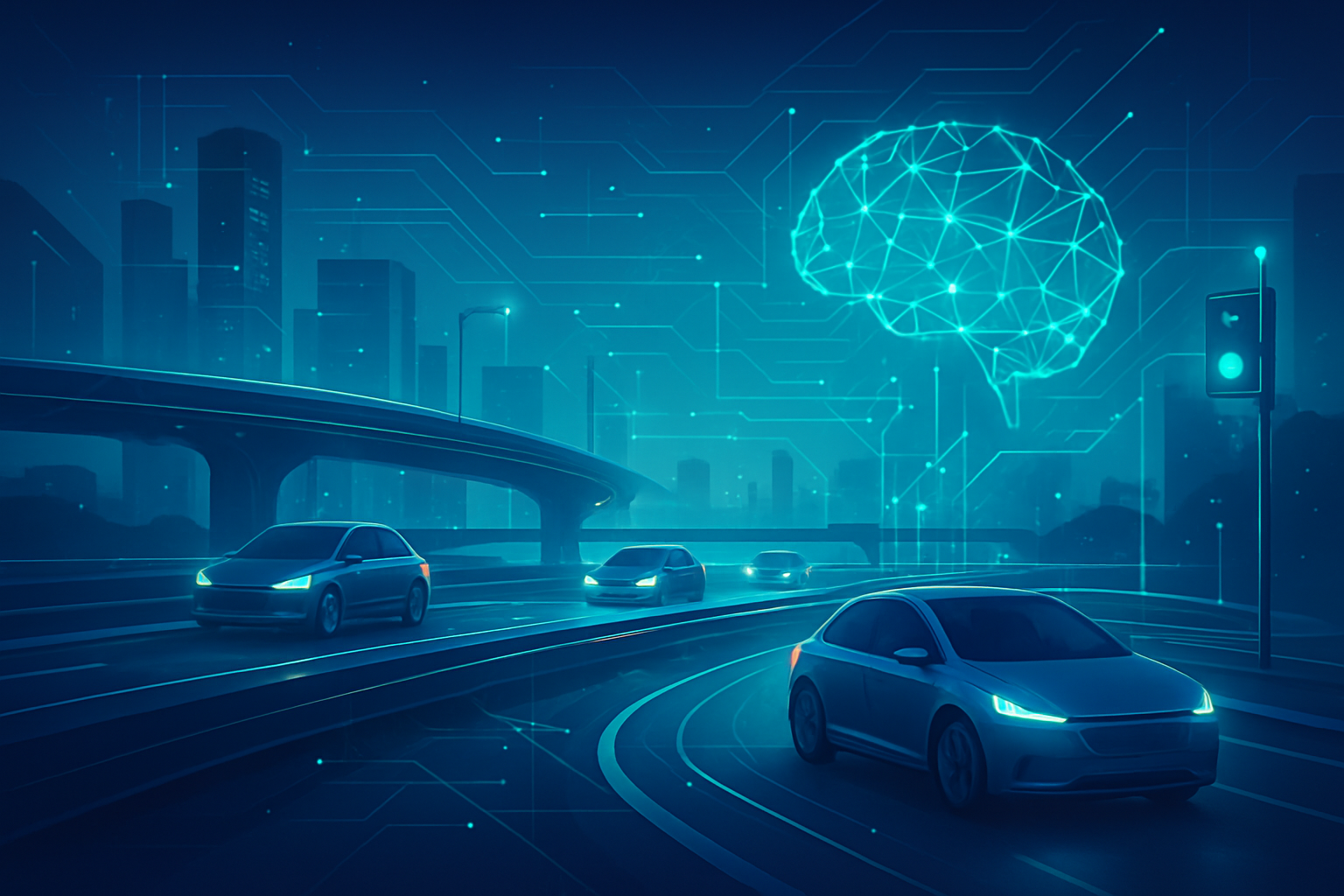Digital transformation, a pervasive and accelerating global phenomenon, is fundamentally reshaping industries and economies worldwide. Driven by a powerful confluence of advanced technologies like Artificial Intelligence (AI), Machine Learning (ML), Cloud Computing, the Internet of Things (IoT), Edge Computing, Automation, and Big Data Analytics, this ongoing evolution marks a profound shift in how businesses operate, innovate, and engage with their customers. It's no longer a strategic option but a competitive imperative, with organizations globally investing trillions to adapt, streamline operations, and unlock new value. This wave of technological integration is not merely optimizing existing processes; it is creating entirely new business models, disrupting established markets, and setting the stage for the next era of industrial and societal advancement.
The Technical Pillars of a Transformed World
At the heart of this digital metamorphosis lies a suite of sophisticated technologies, each bringing unique capabilities that collectively redefine operational paradigms. These advancements represent a significant departure from previous approaches, offering unprecedented scalability, real-time intelligence, and the ability to derive actionable insights from vast, diverse datasets.
Artificial Intelligence (AI) and Machine Learning (ML) are the primary catalysts. Modern AI/ML platforms provide end-to-end capabilities for data management, model development, training, and deployment. Unlike traditional programming, which relies on explicit, human-written rules, ML systems learn patterns from massive datasets, enabling predictive analytics, computer vision for quality assurance, and generative AI for novel content creation. This data-driven, adaptive approach allows for personalization, intelligent automation, and real-time decision-making previously unattainable. The tech community, while recognizing the immense potential for efficiency and cost reduction, also highlights challenges in implementation, the need for specialized expertise, and ethical considerations regarding bias and job displacement.
Cloud Computing serves as the foundational infrastructure, offering Infrastructure as a Service (IaaS), Platform as a Service (PaaS), and Software as a Service (SaaS). This model provides on-demand access to virtualized IT resources, abstracting away the complexities of physical hardware. It contrasts sharply with traditional on-premise data centers by offering superior scalability, flexibility, and cost-effectiveness through a pay-as-you-go model, converting capital expenditures into operational ones. While initially embraced for its simplicity and stability, some organizations have repatriated workloads due to concerns over costs, security, and compliance, leading to a rise in hybrid cloud strategies that balance both environments. Major players like Amazon (NASDAQ: AMZN) with AWS, Microsoft (NASDAQ: MSFT) with Azure, and Alphabet (NASDAQ: GOOGL) with Google Cloud continue to dominate this space, providing the scalable backbone for digital initiatives.
Internet of Things (IoT) and Edge Computing are transforming physical environments into intelligent ecosystems. IoT involves networks of devices embedded with sensors and software that collect and exchange data, ranging from smart wearables to industrial machinery. Edge computing complements IoT by processing data at or near the source (the "edge" of the network) rather than sending it all to a distant cloud. This localized processing significantly reduces latency, optimizes bandwidth, enhances security by keeping sensitive data local, and enables real-time decision-making critical for applications like autonomous vehicles and predictive maintenance. This distributed architecture is a leap from older, more centralized sensor networks, and its synergy with 5G technology is expected to unlock immense opportunities, with Gartner predicting that 75% of enterprise data will be processed at the edge by 2025.
Automation, encompassing Robotic Process Automation (RPA) and Intelligent Automation (IA), is streamlining workflows across industries. RPA uses software bots to mimic human interaction with digital systems for repetitive, rule-based tasks. Intelligent Automation, an evolution of RPA, integrates AI/ML, Natural Language Processing (NLP), and computer vision to handle complex processes involving unstructured data and cognitive decision-making. This "hyper-automation" goes beyond traditional, fixed scripting by enabling dynamic, adaptive solutions that learn from data, minimizing the need for constant reprogramming and significantly boosting productivity and accuracy.
Finally, Big Data Analytics provides the tools to process and derive insights from the explosion of data characterized by Volume, Velocity, and Variety. Leveraging distributed computing frameworks like Apache Hadoop and Apache Spark, it moves beyond traditional Business Intelligence's focus on structured, historical data. Big Data Analytics is designed to handle diverse data formats—structured, semi-structured, and unstructured—often in real-time, to uncover hidden patterns, predict future trends, and support immediate, actionable responses. This capability allows businesses to move from intuition-driven to data-driven decision-making, extracting maximum value from the exponentially growing digital universe.
Reshaping the Corporate Landscape: Who Wins and Who Adapts
The relentless march of digital transformation is creating a new competitive battleground, profoundly impacting AI companies, tech giants, and startups alike. Success hinges on a company's ability to swiftly adopt, integrate, and innovate with these advanced technologies.
AI Companies are direct beneficiaries, sitting at the epicenter of this shift. Their core offerings—from specialized AI algorithms and platforms to bespoke machine learning solutions—are the very engines driving digital change across sectors. As demand for intelligent automation, advanced analytics, and personalized experiences surges, companies specializing in AI/ML find themselves in a period of unprecedented growth and strategic importance.
Tech Giants such as Amazon (NASDAQ: AMZN), Microsoft (NASDAQ: MSFT), and Alphabet (NASDAQ: GOOGL) are leveraging their vast resources to solidify and expand their market dominance. They are the primary providers of the foundational cloud infrastructure, comprehensive AI/ML platforms, and large-scale data analytics services that empower countless other businesses' digital journeys. Their strategic advantage lies in their ability to continuously innovate, acquire promising AI startups, and deeply integrate these technologies into their expansive product ecosystems, setting industry benchmarks for technological advancement and user experience.
Startups face a dual landscape of immense opportunity and significant challenge. Unburdened by legacy systems, agile startups can rapidly adopt cutting-edge technologies like AI/ML and cloud infrastructure to develop disruptive business models and challenge established players. Their lean structures allow for competitive pricing and quick innovation, enabling them to reach global markets faster. However, they must contend with limited resources, the intense financial investment required to keep pace with rapid technological evolution, the challenge of attracting top-tier talent, and the imperative to carve out unique value propositions in a crowded, fast-moving digital economy.
The competitive implications are stark: companies that effectively embrace digital transformation gain significant strategic advantages, including enhanced agility, faster innovation cycles, differentiated offerings, and superior customer responsiveness. Those that fail to adapt risk obsolescence, a fate exemplified by the fall of Blockbuster in the face of Netflix's digital disruption. This transformative wave disrupts existing products and services by enabling intelligent automation, reducing the need for costly on-premise IT, facilitating real-time data-driven product development, and streamlining operations across the board. Companies are strategically positioning themselves by focusing on data-driven insights, hyper-personalization, operational efficiency, and the creation of entirely new business models like platform-as-a-service or subscription-based offerings.
The Broader Canvas: Societal Shifts and Ethical Imperatives
The digital transformation, often heralded as the Fourth Industrial Revolution, extends far beyond corporate balance sheets, profoundly impacting society and the global economy. This era, characterized by an exponential pace of change and the convergence of physical, digital, and biological realms, demands careful consideration of its wider significance.
At its core, this transformation is inextricably linked to the broader AI landscape. AI and ML are not just tools; they are catalysts, embedded deeply into the fabric of digital change, driving efficiency, fostering innovation, and enabling data-driven decision-making across all sectors. Key trends like multimodal AI, the democratization of AI through low-code/no-code platforms, Explainable AI (XAI), and the emergence of Edge AI highlight a future where intelligence is ubiquitous, transparent, and accessible. Cloud computing provides the scalable infrastructure, IoT generates the massive datasets, and automation, often AI-powered, executes the streamlined processes, creating a symbiotic technological ecosystem.
Economically, digital transformation is a powerful engine for productivity and growth, with AI alone projected to contribute trillions to the global economy. It revolutionizes industries from healthcare (improved diagnostics, personalized treatments) to finance (enhanced fraud detection, risk management) and manufacturing (optimized production). It also fosters new business models, opens new market segments, and enhances public services, promoting social inclusion. However, this progress comes with significant concerns. Job displacement is a pressing worry, as AI and automation increasingly take over tasks in various professions, raising ethical questions about income inequality and the need for comprehensive reskilling initiatives.
Ethical considerations are paramount. AI systems can perpetuate or amplify societal biases if trained on flawed data, leading to unfair outcomes in critical areas. The opacity of complex AI models poses challenges for transparency and accountability, especially when errors or biases occur. Furthermore, the immense data requirements of AI systems raise serious privacy concerns regarding data collection, storage, and usage, necessitating robust data privacy laws and responsible AI development.
Comparing this era to previous industrial revolutions reveals its unique characteristics: an exponential pace of change, a profound convergence of technologies, a shift from automating physical labor to automating mental tasks, and ubiquitous global connectivity. Unlike the linear progression of past revolutions, the current digital transformation is a continuous, rapid reshaping of society, demanding proactive navigation and ethical stewardship to harness its opportunities while mitigating its risks.
The Horizon: Anticipating Future Developments and Challenges
The trajectory of digital transformation points towards an even deeper integration of advanced technologies, promising a future of hyper-connected, intelligent, and autonomous systems. Experts predict a continuous acceleration, fundamentally altering how we live, work, and interact.
In the near-term (2025 and beyond), AI is set to become a strategic cornerstone, moving beyond experimental phases to drive core organizational strategies. Generative AI will revolutionize content creation and problem-solving, while hyper-automation, combining AI with IoT and RPA, will automate end-to-end processes. Cloud computing will solidify its role as the backbone of innovation, with multi-cloud and hybrid strategies becoming standard, and increased integration with edge computing. The proliferation of IoT devices will continue exponentially, with edge computing becoming critical for real-time processing in industries requiring ultra-low latency, further enhanced by 5G networks. Automation will move towards intelligent process automation, handling more complex cognitive functions, and Big Data Analytics will enable even greater personalization and predictive modeling, driving businesses towards entirely data-driven decision-making.
Looking long-term (beyond 2030), we can expect the rise of truly autonomous systems, from self-driving vehicles to self-regulating business processes. The democratization of AI through low-code/no-code platforms will empower businesses of all sizes. Cloud-native architectures will dominate, with a growing focus on sustainability and green IT solutions. IoT will become integral to smart infrastructure, optimizing cities and agriculture. Automation will evolve towards fully autonomous operations, and Big Data Analytics, fueled by an ever-expanding digital universe (projected to reach 175 zettabytes soon), will continue to enable innovative business models and optimize nearly every aspect of enterprise operations, including enhanced fraud detection and cybersecurity.
Potential applications and emerging use cases are vast: AI and ML will revolutionize healthcare diagnostics and personalized treatments; AI-driven automation and digital twins will optimize manufacturing; AI will power hyper-personalized retail experiences; and ML will enhance financial fraud detection and risk management. Smart cities and agriculture will leverage IoT, edge computing, and big data for efficiency and sustainability.
However, significant challenges remain. Many organizations still lack a clear digital transformation strategy, leading to fragmented efforts. Cultural resistance to change and a persistent skills gap in critical areas like AI and cybersecurity hinder successful implementation. Integrating advanced digital solutions with outdated legacy systems is complex, creating data silos. Cybersecurity and robust data governance become paramount as data volumes and attack surfaces expand. Measuring the return on investment (ROI) for digital initiatives can be difficult, and budget constraints alongside potential vendor lock-in are ongoing concerns. Addressing ethical considerations like bias, transparency, and accountability in AI systems will be a continuous imperative.
Experts predict that while investments in digital transformation will continue to surge, failure rates may also rise as businesses struggle to keep pace with rapid technological evolution and manage complex organizational change. The future will demand not just technological adoption, but also cultural change, talent development, and the establishment of robust ethical guidelines to thrive in this digitally transformed era.
A Comprehensive Wrap-up: Navigating the Digital Tsunami
The digital transformation, propelled by the relentless evolution of AI/ML, Cloud Computing, IoT/Edge, Automation, and Big Data Analytics, is an undeniable and irreversible force shaping our present and future. It represents a fundamental recalibration of economic activity, societal structures, and human potential. The key takeaways from this monumental shift are clear: these technologies are deeply interconnected, creating a synergistic ecosystem that drives unprecedented levels of efficiency, innovation, and personalization.
This development's significance in AI history is profound, marking a transition from isolated breakthroughs to pervasive, integrated intelligence that underpins nearly every industry. It is the realization of many long-held visions of intelligent machines and connected environments, moving AI from the lab into the core operations of enterprises globally. The long-term impact will be a world defined by hyper-connectivity, autonomous systems, and data-driven decision-making, where adaptability and continuous learning are paramount for both individuals and organizations.
In the coming weeks and months, what to watch for includes the continued mainstreaming of generative AI across diverse applications, further consolidation and specialization within the cloud computing market, the accelerated deployment of edge computing solutions alongside 5G infrastructure, and the ethical frameworks and regulatory responses attempting to keep pace with rapid technological advancement. Businesses must prioritize not just technology adoption, but also cultural change, talent development, and the establishment of robust ethical guidelines to thrive in this digitally transformed era.
This content is intended for informational purposes only and represents analysis of current AI developments.
TokenRing AI delivers enterprise-grade solutions for multi-agent AI workflow orchestration, AI-powered development tools, and seamless remote collaboration platforms.
For more information, visit https://www.tokenring.ai/.









